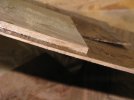I am making some drawer fronts that include some thin (1/4 inch) panels. Since they are small, I decided to use some of the info. from a workshop several years ago that included hammer veneering. I made my veneer (1/16 inch thick) by planing the edge of 15/16 inch board and then slicing it on my bandsaw to create the veneer. The faces are fairly rough. I then took the veneer edges and used my shooting board to insure even edges for bookmatching. I tried my veneer saw (Granercy) but because this material is a burl the saw did not produce an edge even enough for a good bookmatch in my opinion. I have not done this much, but the saw technique is not that difficult. I used hide glue ( a fresh batch) coated the 1/4inch back panel of walnut, wet the outside of the veneer to counter the curl if I put glue on only one side, and laid the veneer. The veneer still curled some as you can see in the pictures. However, the part that did not work well, is that even though I had the edges together for the book match when I finished with the veneer hammer; they seemed to pull apart at the edges as they dried. So, I have several questions:
1. What am I missing from a techniques stand point?
2. How do I go about removing the veneer in one piece to give this another go?
3. What other suggestions can those of you who do this frequently make? This is a skill I fully intend to master.
Thanks!
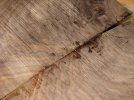
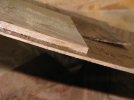
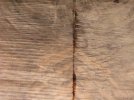
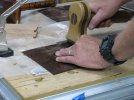


1. What am I missing from a techniques stand point?
2. How do I go about removing the veneer in one piece to give this another go?
3. What other suggestions can those of you who do this frequently make? This is a skill I fully intend to master.
Thanks!







